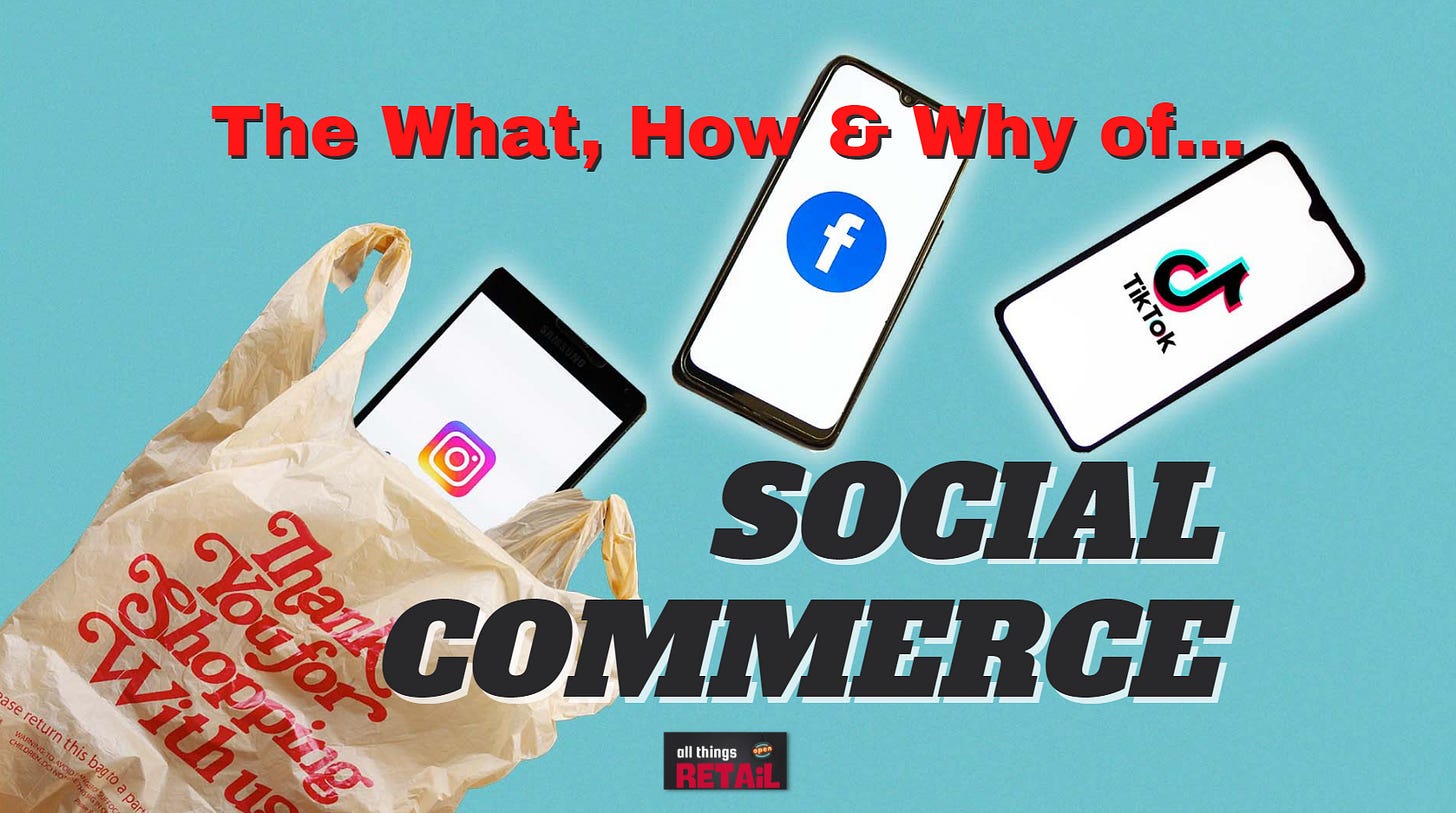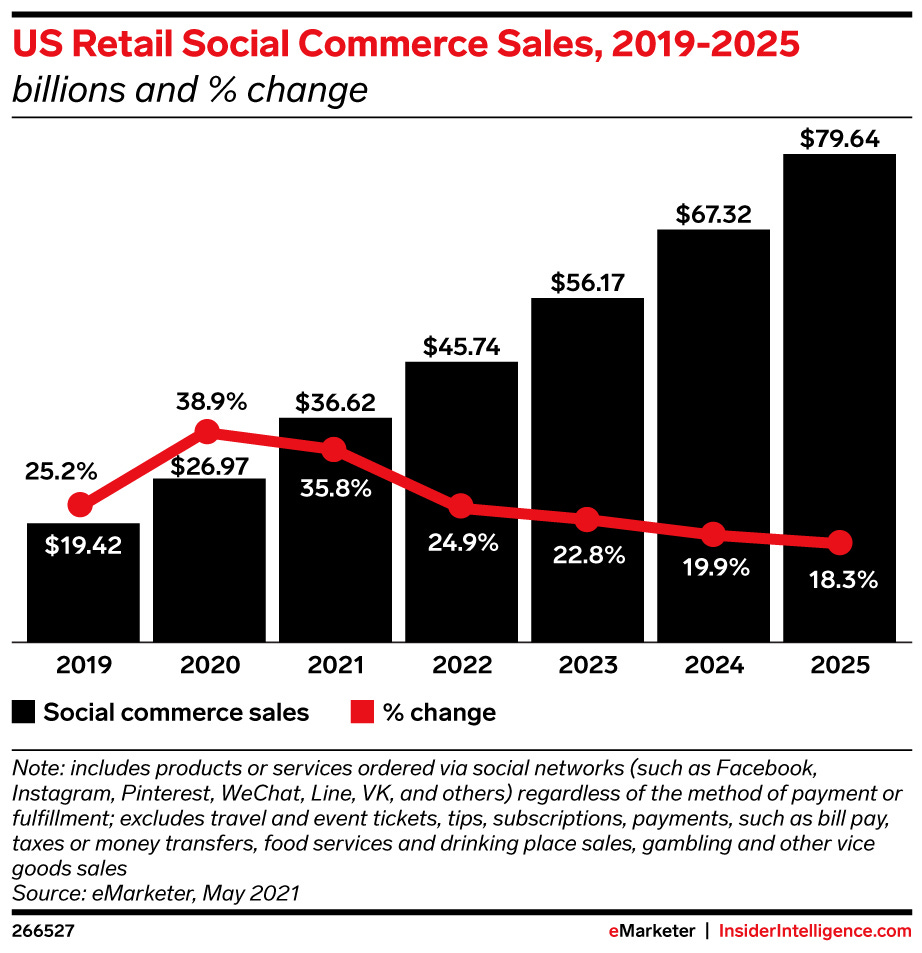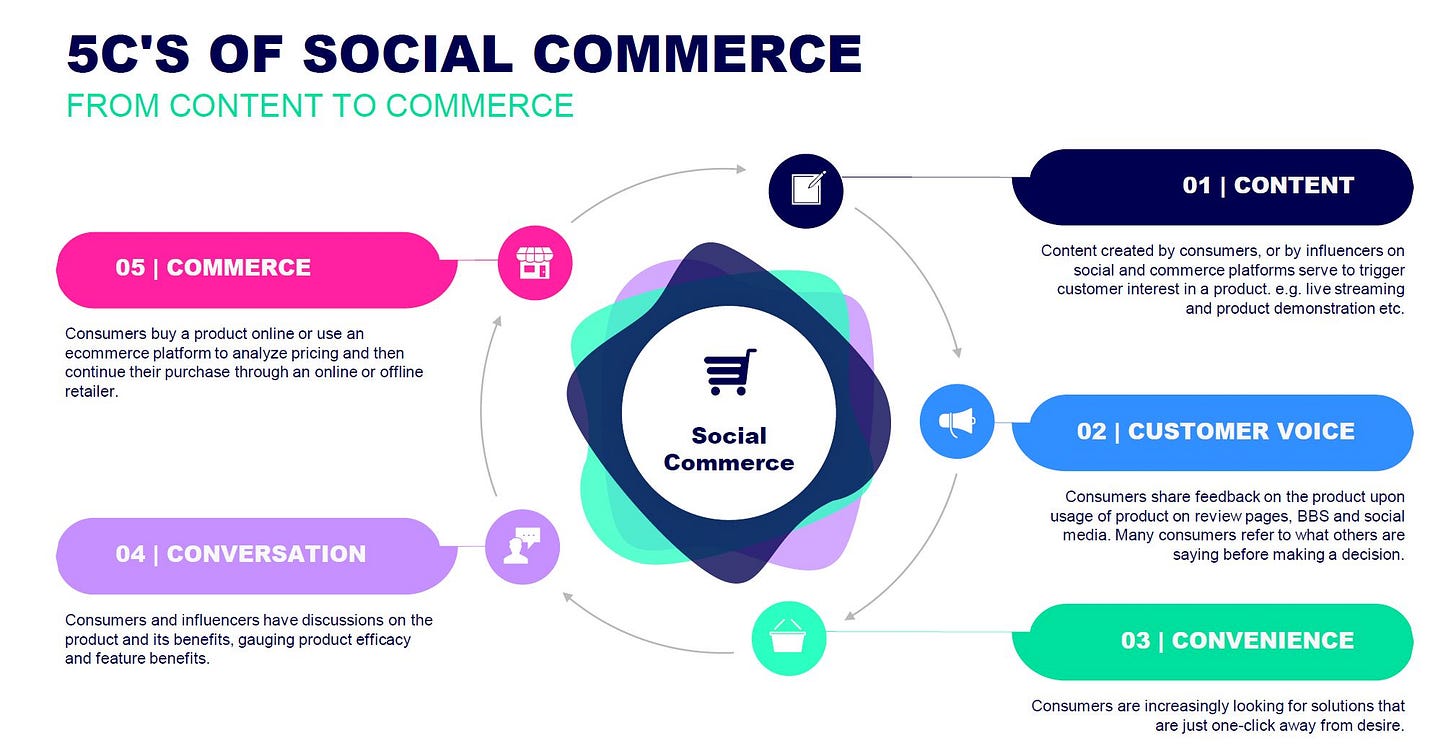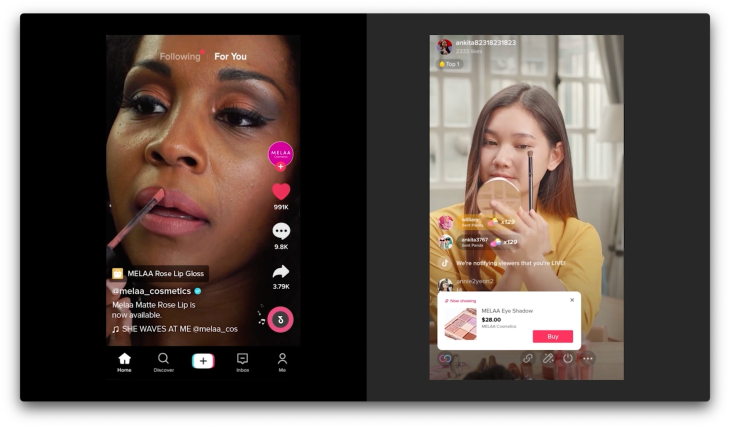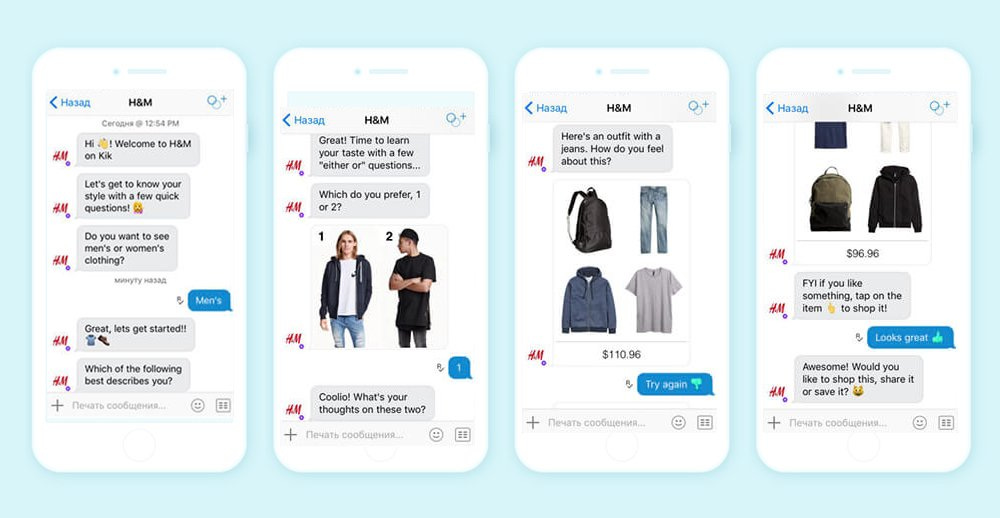Social Commerce: The What, The How, & The Why
Plus a quick history of Warby Parker $ Physical Retail...
You have seen me use the statement “engage with and serve the customer wherever and whenever she wants” often. This mindset is critical for all retailers, moreso today than ever. It’s importance will continue to grow, and merchants who do not live by this mantra will fall far behind competitively.
One relatively new opportunity to help “serve the customer wherever and whenever she wants” is social commerce. In today’s issue, we take a deeper dive into what social commerce is, why it’s important, and how to best leverage it.
I have been a fan of Warby Parker for a long time, primarily because of their belief in physical retail as a complementary channel to their digital business. Most if not all DTC retailers should be exploring a physical presence (my advisory firm has helped many DTC sellers make the leap to physical retail successfully). So, as a leader in this shift (Warby not me!), I wanted to share a quick history of Warby Parker.
If you are interested in a low cost means of marketing to 7,500 retail decision makers, you should consider advertising here. It’s an inexpensive way to get your offering seen in a very uncluttered and effective ad environment. Click the button to learn more:
Sponsored Content
Are You Challenged with Excess Inventory Tying Up Your Working Capital?
Plan B Distribution helps companies solve their inventory and debt problems. When Plan A doesn't work, then we are your Plan B solution. We have 30 years of experience helping companies with the following challenges:
- Inventory evaluations
- Asset management
- Liquidations, inventory sell-offs
- Logistics
- Warehousing
- 3PL/fulfillment services
- Debt management and more.
Our 500+ customers include banks, VCs, investors, manufacturers, wholesalers, distributors, and both physical and online retailers. We have helped them move over 500,000,000+ units of excess inventory, freeing up both cash and space. We do so under strict confidentiality and control exactly where your product is sold.
Learn more about how we can assist your business with asset disposition, inventory reductions, or logistical challenges. Call Ryan at Plan B, 818-848-6111 or visit www.aplanb.com.
While social commerce is relatively new and has evolving capabilities, features, and impact on consumer engagement and revenue generation, it isn’t hard to use. Sure, it requires a basic understanding of the platforms that offer it as well as the best practices for each. But a bit of focus and then an ongoing commitment to testing different tactics and adjusting your offerings accordingly will get you a long way. I would argue that attaining some reasonable level of success from using social commerce is far easier (and less expensive) than creating meaningful digital marketing campaigns for your ecommerce offering. Let’s dig in!
So, what the heck is social commerce?
It’s pretty simple: social commerce is transacting sales on one or more social media platforms. The opportunity for the consumer to shop and buy is integrated into each platform, and in most cases she never leaves that site to complete her purchase. She sees a product in one of your social posts, clicks on it to learn more and ultimately adds it to her cart and checks out. With social commerce, each platform becomes an additional online presence and de facto website for you. Pretty cool.
And social commerce important why?
Simply put, social commerce presents merchants with meaningful opportunities to reach new buyers, expose their brand and products to them and increase sales. As the general use of social media grows, the amount of commerce transacted on these platforms will follow suit. A new report from Accenture predicts social commerce will grow three times as fast as traditional ecommerce, more than doubling from $492 billion worldwide in 2021 to $1.2 trillion in 2025. In 2022, US social commerce sales are expected to reach $45.74 billion, with more than a half of the country’s adults making a purchase on social media. You do not want to miss out on this opportunity; your competitors likely won’t.
How does social commerce work?
Social commerce is brands offering products for browsing and purchase on various social media networks. Sellers display product images, information on features and benefits, and pricing. In most social commerce environments, shoppers complete the process of payment and checkout without ever leaving the platform. Sellers drive visits, awareness, and guest interactions by creating shoppable content on the relevant platforms. In many cases:
You may be able to advertise products by promoting your shoppable content to a targeted segment of social media users.
You may be able to create a dedicated shop within the social media app.
You may be able to allow shoppers to communicate directly with brand reps via the platform’s messaging feature.
You may be able to allow shoppers to interact with AI-driven chatbots that can serve as their personal shoppers.
Social commerce allows consumers to browse, research, compare, and buy products in a single location, much as they would do in your own ecommerce store.
What platforms offer social commerce?
Essentially all the major social platforms are now involved on social commerce. Here is a basic overview (credit: emplifi):
“Facebook
Facebook leads the way among social commerce platforms, thanks to its massive user base and broad-based popularity among consumers. With Facebook Shops, merchants can showcase their products by setting up digital storefronts on their Facebook pages. Shoppers can browse, discover products, and make payment entirely within the retailer’s Facebook shop.
As the owner of a Facebook storefront, brands can customize their collections of products and create their own imagery and designs. To drive traffic to their store, brands can promote products via targeted ads and sharing content with followers. Facebook Shops also provides data about sales and other aspects of performance, so you can make informed decisions about your store design and inventory.
Livestream shopping is another option for brands selling on both Facebook and Instagram. This approach allows brands to integrate shopping into live video broadcasts with product tags that allow viewers to make instant in-app purchases. Such interactive content can make product discovery easier and provide shoppers with a more engaging, meaningful experience.
Instagram
As Facebook’s sister platform, Instagram offers the same core tools for social commerce, including the ability to create in-app stores, enable in-app checkout, and target specific audiences with ads. Instagram is a popular place for consumers to discover content and products related to their personal lifestyles, such as fashion, beauty, health, and fitness. Since Instagram has a younger user base than Facebook does, it may be an especially useful platform for selling to consumers ages 18-29.
Visual content has proven to be the best way for generating views and links on Instagram. Its social commerce tools enable you to make the most of such content by adding product tags to images or videos (see the “How Social Commerce Works” for an example).
TikTok
TikTok is another recent entry in the race for social commerce supremacy. Like Snapchat, TikTok mainly offers an opportunity to sell products to younger consumers (18-29 years old). The platform specializes in short-form video content, so it lends itself to highly visual creative campaigns.
TikTok has partnered with Shopify to enable its users to buy products directly in the app, just like other social platforms. Merchants can place shoppable video ads in users’ feeds, while using Shopify’s dashboard to create, manage, and optimize their campaigns.
Pinterest
While less popular than Facebook and Instagram, Pinterest is a natural fit for social commerce. Pinterest thrives as a place where people can share and discover content about their personal interests and hobbies. That makes it a promising arena for selling products such as clothes, food, and home décor.
To enable social shopping, Pinterest merchants can create and promote shoppable Product Pins that display the product image, price, availability, and a “buy” button enabling shoppers to go straight to checkout. Pinterest recently introduced Shopping Lists, enabling shoppers to save product pins in a single location and receive pricing updates—one of several new features intended to make shopping easier and more convenient.
Snapchat
As a social commerce platform, Snapchat builds on its strengths in visual content and augmented reality. Given the age of a typical user, it has promise as a tool for selling to teens and young adults.
Beauty and Fashion brands might be especially interested in taking Snapchat for a spin. For example, merchants can integrate social shopping into branded AR try-on experiences for clothes, cosmetics, or accessories, so consumers can use their smartphone cameras to see how a product looks on them and then pay for the item inside the app.”
Here are some best practices for social commerce:
As with most selling efforts, there is no single solution or set of tactics that works well for every retailer. While testing, analyzing, and adjusting will be a must, these best practices are a great place to begin.
Share user-generated content
UGC is a great way to engage loyal customers and attract new users. Watch for mentions and hashtags that identify you business and share generously.
Leverage influencer marketing
I have written about the value of influencers and in particular micro-influencers several times (including in last week’s issue). The key here is you are actually selling product on the same platform (in theory) that your influencer(s) “are influencing”. This will increase the likelihood of increased conversion.
Treat each social platform discreetly from the others
Social media platforms were not all created equally and often serve different consumers and purposes. Understanding how each one works for users is essential to social commerce success. This helps with aspects such as relatable creative and the uses of each feature. It’s also essential to stay up-to-date with the limitations of each feature.
Focus on the proper platforms
As noted above, there are several options to choose from in terms of platforms. Each may serve a somewhat different purpose and engage a somewhat different user. Don’t try to “boil the ocean” and be highly active on every platform. You don’t have the time or focus. Think about your core customers. Which channels do they browse and share content on? What types of content do they engage with most? Answering these and similar questions will help you decide which platforms to focus your social commerce efforts around.
Create seamless, shorter paths to purchase
In today’s retail world, convenience is crucial. To ensure that you attract the proper consumer and capture all possible sales, you’ll need a seamless, omni-channel social commerce approach. This should revolve around your core customer data and insights. This needs to include, but is not be limited to, leveraging social checkout features, creating eCommerce, shoppable social feeds and integrating your online and in-store experiences.
Leverage existing social checkout functions
When a shopper is ready to buy, be sure the purchase process is quick and easy. Most platforms have integrated checkout capabilities. Use them. Avoid the temptation to link customers back to you main site and then force them to navigate to your website’s shopping cart and checkout process. Keep them on the platform, impress them with your efficiency, and collect their cash. Follow the old proverb: “fewer clicks = higher sales”.
Try an AI Chatbot to engage with your consumers
There are several options for adding AI Bots into your website as well as social channels to add conversation commerce features. Different providers may function on different platforms, and some are better for larger business while others are more flexible. The goal of an II Chatbot is to automate most engagements with your customers and convert customer service conversations into sales. Learn more about AI Chatbots here.
Optimize, optimize, optimize
As new platforms and features emerge on existing platforms, your customers’ behaviors will likely evolve, and therefore your social commerce strategy must as well. The world changes quickly and you need to dig into performance data to understand what is working, what isn’t (even if it did in the past), and adjust your tactics accordingly.
Lower-priced items sell better
To date, the average order value of a social shopping transaction is about half the amount of a website transaction. Perhaps it’s the impulse nature of social shopping, but whatever the reason, it’s clear that lower-priced products sell better. While you do not need to eliminate pricier items, keep your focus on lower price points.
Get into live streaming
Live stream shopping, for our discussion purposes, is when a business uses streaming video to sell something in real time to a live audience, all on social platforms. Sound like QVC? A bit, but there are important differences. First, the delivery of a live stream shopping event takes place over the internet. Second, it allows the viewing audience to interact with the host in the moment, typically via a chat or an “ask a question” button. Further, it’s unedited and spontaneous, so viewers can ask questions and comment in real time.
Any way you look at it, social commerce is likely here to stay for a long time and it is becoming more and more impactful. Be sure you add it to your portfolio of marketing tactics.
Sponsored Content
Warby Parker: Digital Innovator & Physical Retail Devotee
David Gilboa, a Warby Parker co-founder, lost his glasses while in business school. The cost to replace them was exorbitant, which led to discussions with his Wharton classmates (Neil Blumenthal, Andrew Hunt, and Jeffrey Raider) about how they could offer prescription eyeglasses at a fraction of then-current price.
Keep reading with a 7-day free trial
Subscribe to All Things Retail to keep reading this post and get 7 days of free access to the full post archives.





